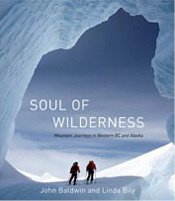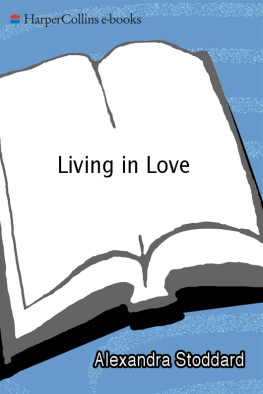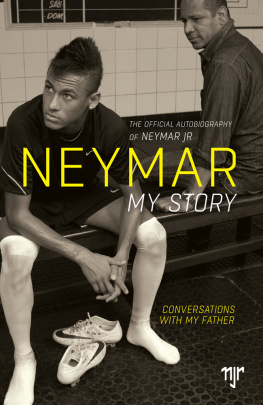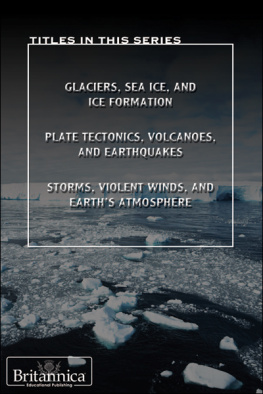To my mom, for sharing with me the perfect space to write this book;
And to my honey, John, for sharing his ear, his shoulder and his heart, and for believing in me to help make it possible for me to write this book.
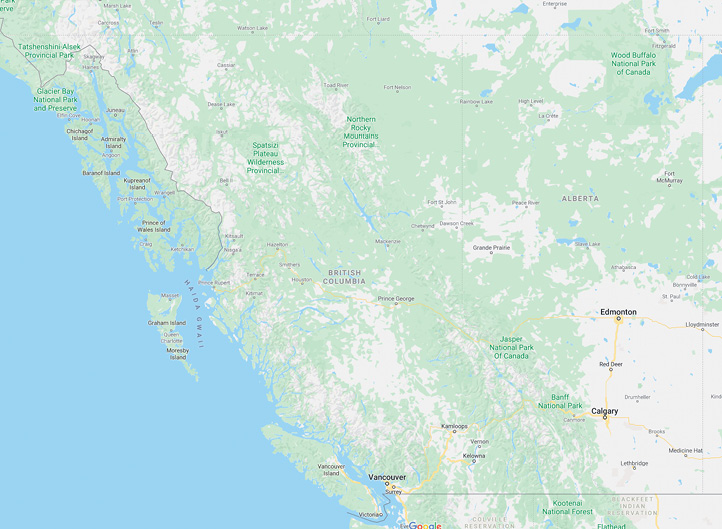 Imagery 2020 TerraMetrics, Map data 2020 Google, INEGI
Imagery 2020 TerraMetrics, Map data 2020 Google, INEGIPhotographers
A picture is worth a thousand words, the saying goes.
Within the pages of this book, Ive written many thousands of words with the desire to reveal the glaciers of Alberta and British Columbia as the vibrant, mysterious, multidimensional, fascinating entities they are. But sometimes, words need companions. I owe enormous thanks and gratitude to all these talented professional photographers for sharing their images to help make the story of western Canadas glaciers more fascinating, captivating, intriguing, humbling and downright gorgeous.
- John Baldwin
- Agathe Bernard
- Linda Bily
- Anthony Bonello
- Bryce Brown
- Isabel Budke
- Bruno Engler
- Nick Fitzhardinge
- Martina Halik/Raven Eye
- Pam Jenks
- Amy Liu
- Darcy Monchak
- Sam McCoy
- Pat Morrow
- John Price
- Harry Rowed
- Scott Rowed
- Chic Scott
- John Scurlock
- Steve Tersmette
- Phil Tomlinson
- Paul Zizka
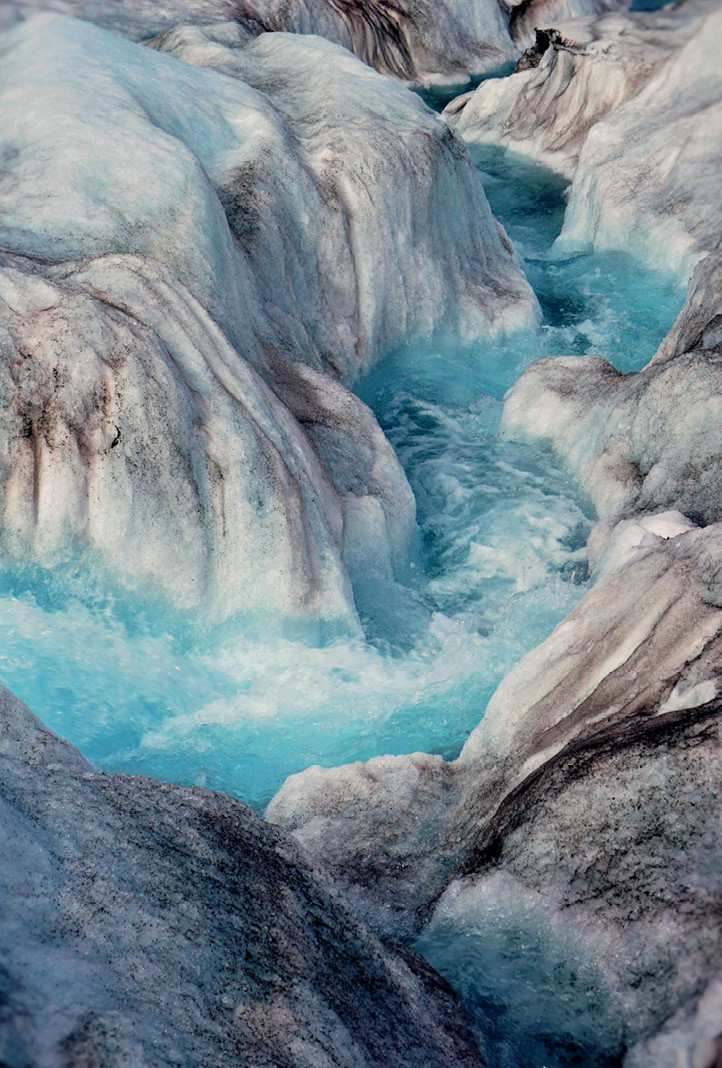 Under the warm summer sun, glaciers course with streams filled with their own melting ice. Photo by Lynn Martel
Under the warm summer sun, glaciers course with streams filled with their own melting ice. Photo by Lynn MartelPrologue
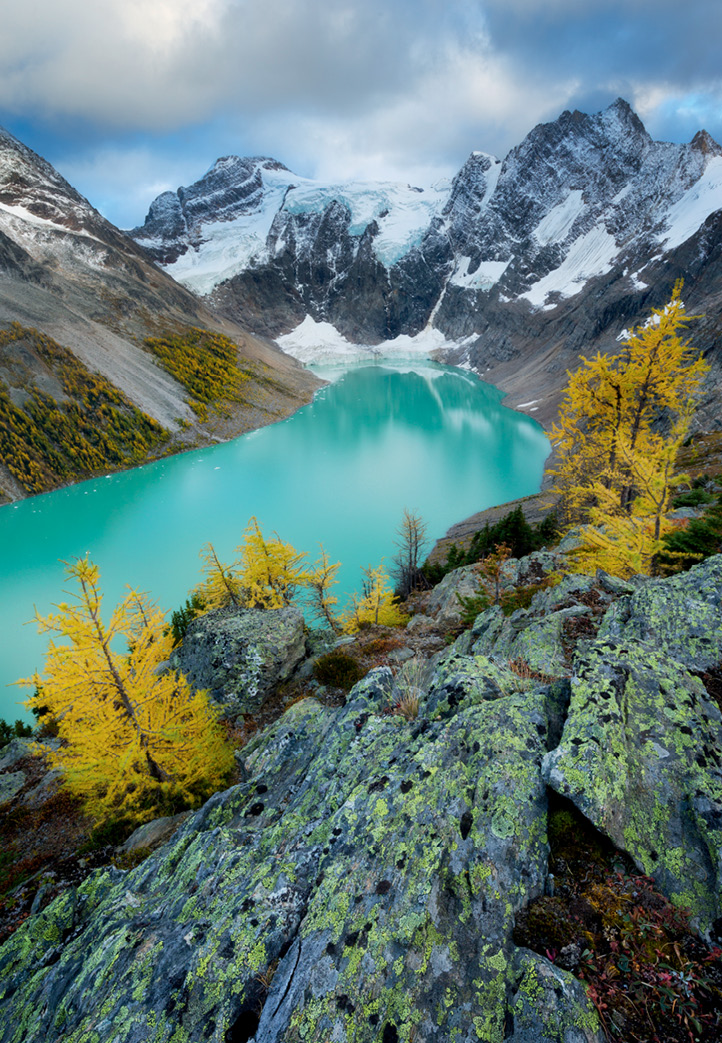 Like all glaciers in western Canada, those at the fabled Lake of the Hanging Glacier melt more and more every year. Will those lakes retain their stunning turquoise colour as the glaciers diminish over the coming decades? Photo by Nick Fitzhardinge
Like all glaciers in western Canada, those at the fabled Lake of the Hanging Glacier melt more and more every year. Will those lakes retain their stunning turquoise colour as the glaciers diminish over the coming decades? Photo by Nick FitzhardingeChurning Wind and Snow
The wind was everywhere, a brutal, tangible force pushing my body from all sides at once. With my hood cinched snugly around my face, my eyes focused through rose-tinted ski goggles on the ski tails of my rope-mate just a few metres ahead of me, the wind erasing his tracks like a vigorously shaken Etch-a-Sketch. We skied along in a deliberate procession across the boundless smooth snowfield, connected one to the other by our nylon rope like preschoolers on a field trip. Tilting my eyes up for a moment, I watched a steep charcoal-shaded cliff face materialize through a swirl of cloud directly ahead of me; then in an instant it was gone, as if a remote control had switched the screen back to a scene of churning wind and snow. Feeling isolated inside my own hood despite the rope connecting me to my companions, I realized how on previous mountain trips, when travelling through foul weather I had simply focused on reaching our destination an alpine hut, a vehicle, eventually home. This time, our destination was whatever place we stopped to set up camp. There and here were the same.
Skiing across a glacier is a thoroughly unique experience. My imagination wandered to previous glacier adventures when I had embraced sunny, windless spring days that granted us time to linger on a summit to soak in the panorama of jagged peaks poking up like rough gemstones displayed on white velvet. A glacier on a sunny, windless day delivers the most sublime experience, mesmerizing quiet in every direction. I remembered skiing back down in a laughing race to the hut before the suns intensity caused our skis to sink into a surface being reduced to mush.
And that was how I had envisioned our Wapta Icefield traverse. It was April, after all. Reality, however, was accompanied by a soundtrack of howling, frosty wind biting my cheeks, gusting so fiercely that even with a 20-kilogram pack on my back I feared being knocked to my butt. Yup, the very climatic conditions that nourish their existence frequently render glaciers nasty, inhospitable, downright unpleasant places.
And endlessly fascinating.
1 Born to Melt
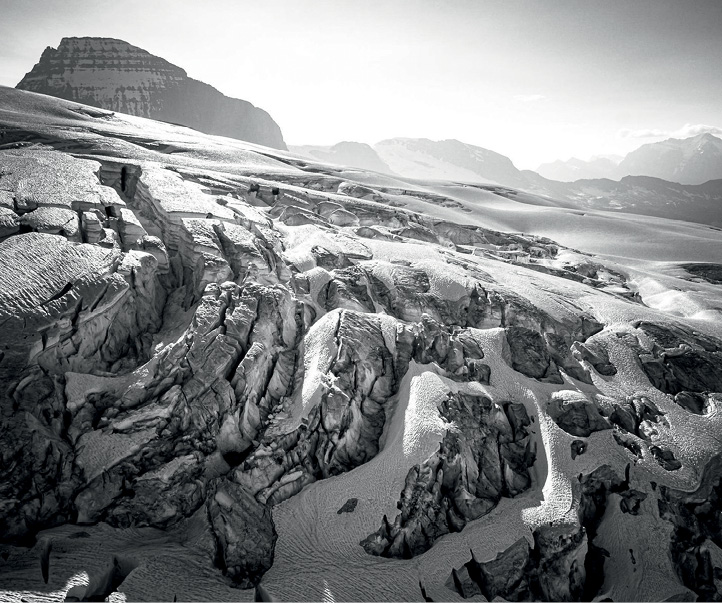 Soft sunlight highlights a maze of crevasses on Mount King Edward in the Canadian Rockies, with Mounts Columbia and Bryce in the background. Next page
Soft sunlight highlights a maze of crevasses on Mount King Edward in the Canadian Rockies, with Mounts Columbia and Bryce in the background. Next page
